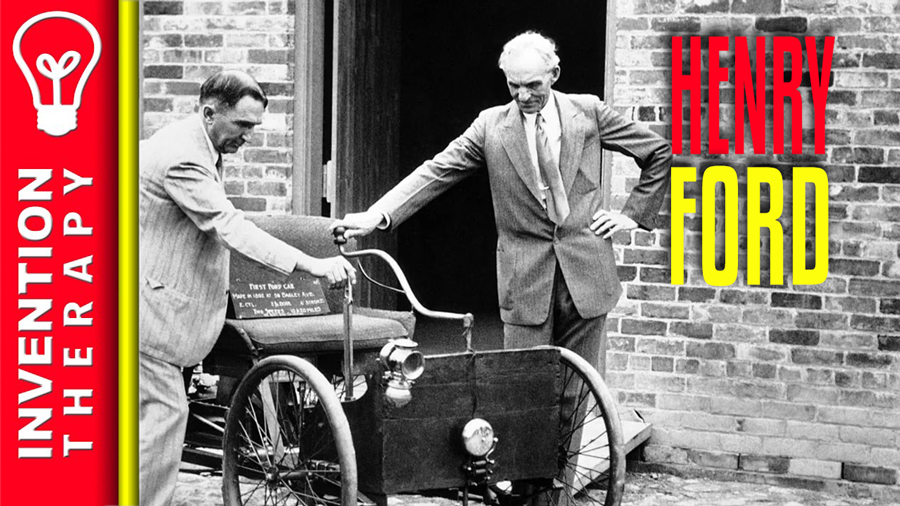Henry Ford was a pioneer of American manufacturing. He founded the Ford Motor Company, designed the Model T car, and was a vital contributor to the adoption of the assembly line. It is probably safe to say that industry and global manufacturing would not be what they are without him.
Here are 25 incredible things you might not know about Henry Ford.
1. Ford was a second-generation immigrant.
His father, William Ford, was born in 1826 in County Cork, Ireland. He immigrated to America in 1847, at only 20 years old. His mother, Mary, was the child of Belgian immigrants. Her parents died when she was very young and was taken in by neighbors. Mary and William married in 1861 and began a farm in Greenfield Township in Michigan, near the town of Dearborn. Henry was the oldest of six children.
2. Henry’s interest in engineering started at the age of twelve.
His father gifted him with a pocket watch at this age. The grateful Henry promptly disassembled and reassembled the timepiece several times. He spent his teen years moonlighting as a watch repairman. He was first exposed to a machine-driven vehicle at 12 as well; the Nichols and Shepard Co. steam-driven tractor was inefficient, dangerous, and expensive, but the first mechanism of its kind that Henry Ford ever saw. His interest was piqued; by his own account, he all but interrogated the engine’s driver about the machine. His fascination would never abate.
3. Henry Ford almost ended up as a farmer.
As the oldest boy in the family, he expected to take over the farm. At age thirteen, he was given substantial responsibility when his mother passed away. Perhaps because of having to shoulder such high expectations when he was so young, Henry began to resent having to work in the fields. If circumstances had been just a little different, he might have spent his entire life on the farm. As luck would have it, he ended up developing machinery to assist farmers all over the country and overcome some of the inefficiencies with the equipment he found frustrating as a young man.
Ford left school after 6th grade, and aside from his apprenticeships, he received no other formal education save a few business classes at Goldsmith, Bryant & Stratton Business College in Detroit much later in life. He received honorary degrees from Michigan State and Colgate University.
4. A career in machinery engineering began in Ford’s teens.
He was sixteen when he left for Detroit to begin an apprenticeship with a machinist who specialized in ship repair. He returned home to Dearborn after three years. His primary career at that point was still in engineering, working for Westinghouse Engine Company and building himself a small machinery workshop on the family’s property to experiment with steam power.
A refashioned tractor built out of broken farm equipment and a homemade, jury-rigged steam engine was his crowning achievement as a very young man. This was a remarkable accomplishment, considering that the young Ford was tinkering alone in a one-room workshop, in between shifts at the factory and work on the farm.
5. Ford met his wife, Clara, in 1885.
Clara Ford was also from a farming family, and he was grateful for her support and practicality. They married in 1888, and Ford nicknamed Clara “the believer” for her unwavering support during his unpredictable career. Clara, not very fond of the spotlight, was an avid gardener. She was eventually named the President of the Garden Club of America. She put considerable thought and energy into the design of their home and property, Fair Lane, which is now designated a National Historic Landmark.
They had one son, Edsel Bryant Ford, who remained an only child. Henry Ford sadly outlived his son, but he and Clara remained close to Edsel’s widow and the couple’s four children.
6. Ford accepted a position at the Edison Illuminating Company in 1861.
His vision for a motorcar already forming; he was determined to learn all he could about electricity, integrating every piece of knowledge that he gained into his experimental engines.
He rose through the ranks quickly. About two years after his employment with the Edison Company, he became Chief Engineer. He was responsible for the team keeping Detroit’s electricity working. Because this meant he worked irregular hours, he had lots of time to develop his engines. He eventually moved from experiments with steam to experiments with gasoline.
7. Ford met his childhood hero Thomas Edison in 1896.
It is rumored that Ford’s direct supervisor, frustrated with his employee’s constantly divided attention, introduced them. His boss hoped that Edison would discourage Ford’s tinkering and instruct him to focus on the work he was employed to do.
Instead, he received encouragement from the famous inventor. Rather than trying to defeat his ambitions, Edison was impressed with Ford and his work. Edison suggested Ford keep up his experimentation banging on the table in his enthusiasm. Ford would later talk about how much it meant to him to receive that emphatic encouragement from the greatest inventor of his time.
Ford and Edison grew close, eventually becoming lifelong friends. They remained in frequent correspondence, collaborated on new projects, and traveled and vacationed together. They even bought adjacent vacation homes. Ford much later wrote a book about Edison and founded an educational museum and school named “The Edison Institute” in honor of his friend.
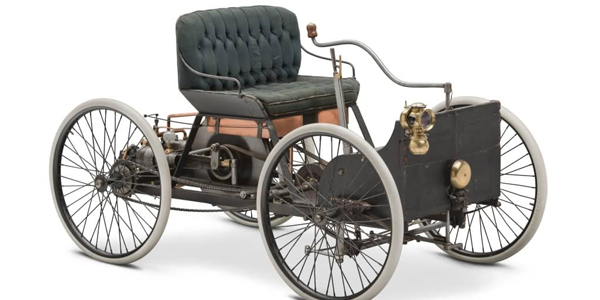
8. Ford built his first complete and working motorcar in a shed behind his house.
With assembly assistance from his friends, he completed the “Quadricycle.” Upon discovering that the shed’s door was too narrow for the machine to drive out, he calmly took a sledgehammer to the doorway. He celebrated by driving through the city at about 10 miles per hour.
The Quadricycle was far from the cars he would eventually produce. A small, gasoline-powered engine sat above the back wheels. He used what materials were available; most of the chassis originated from horse-drawn carriages. The vehicle rolled on bicycle wheels. With no breaks and minimal steering, the Quadricycle was unpredictable and impractical.
9. Ford sold the Quadricycle for two hundred dollars.
One of the traits that made Henry Ford different from most inventors was his willingness to sell his prototypes. Ford claimed that he never looked back and had no interest in nostalgia; if the sale of one invention could fund the creation of another, he didn’t hesitate.
It wasn’t the first “horseless carriage,” a distinction which is usually attributed to Karl Benz in 1886. It wasn’t even the first in Detroit, where there was a prototype developed by Ford’s friend and mentor Charles B. King. Still. Even still, Ford’s version of the horseless carriage represented a major leap forward in the young industry that consisted mainly of engineers interested in the new technology. The only creation of its kind, the Quadricycle, was purchased as a novelty the same year it was completed.
10. Ford outgrew and resigned from the Edison Company in 1899.
He reinvested the money from his first sale into building new motorcars. Despite the Edison Company’s attempts to incentivize him to stay by offering a substantial salary increase, he left the company. With his wife’s blessing, Ford persuaded backers to create the Detroit Automobile Company, where he began work as chief engineer.
The concept was sound, but the newly-termed “automobiles” weren’t profitable enough to satisfy his investors. They were unreliable, and manufacturing them was a slow and expensive process. The Detroit Automobile Company only lasted for three years and produced ten vehicles before closing its doors over Ford’s protests and pleas for patience.
11. Ford created the Henry Ford Company in 1901.
Some of the investors in the Detroit Automobile Company had faith in Ford’s potential. Unfortunately, Ford got sidetracked with a new fascination in racing his machines. This obsession took too much of his attention away from the company. After his backers lost patience with his misdirected priorities, he was forced out of the company. He departed with nine hundred dollars (a little less than $27,000 today). That represented three months of his salary. Unlike the Detroit Automobile Company, the Henry Ford Company continued to operate successfully without its founder and namesake.
12. Ford’s made a third attempt to begin an automobile company in 1903.
Production started at the new Ford Motor Company, with Henry Ford as vice president and chief engineer. The first Model A sold for eight hundred and fifty dollars (about $26,500 in today’s dollars). Two factories opened in 1904, one in Detroit and one in Walkerville, Canada.
13. Ford made a policy of never investing his own money.
Detroit Automobile Company, the Henry Ford Company, and Ford Motor Company were all founded with investors. Ford was the mastermind behind all three, but not a financial backer in any of them. It was only in 1913 that the Ford family bought out the rest of the shareholders, becoming the sole owners of the company. Even then, Ford had a reputation as a shrewd businessman, and not just a brilliant and ambitious engineer.
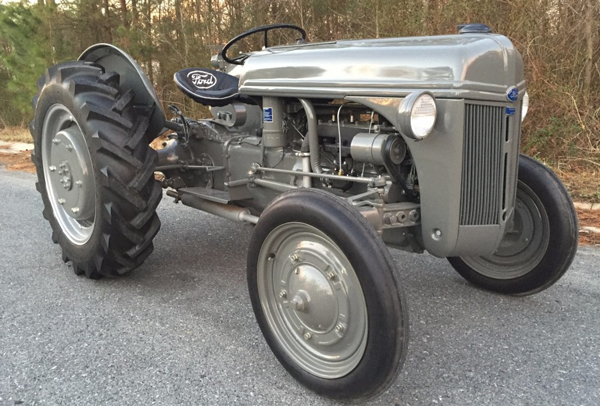
14. Henry Ford cared deeply about the American farmer.
Although he didn’t want to spend his life on a farm, he sincerely wished to make farmers’ work and lives easier. He spent many years of his career developing mechanical tractors, harvesters, and plows. In 1907, he developed the “auto plow,” tractor, and continued to work on automating farm work for most of his career. He opened a tractor plant in Dearborn, MI, where the Fordson tractor was introduced in 1918.
Ford was insistent that machinery was the future of farming. Some of his contemporaries joked that Ford simply hated horses and was fixated on rendering them obsolete.
For a time, his farming equipment was manufactured under the name of Henry Ford and Son. The Ford Motor Company eventually took over manufacturing, and tractors were sold at Ford dealerships alongside cars. Although production and sales dropped during the mid-20th century, for a time, Ford was the most successful tractor manufacturer in the world. The last new model was released in 1975, and fewer and fewer dealerships wanted to carry tractors alongside their cars. The farming division was sold off in 1993.
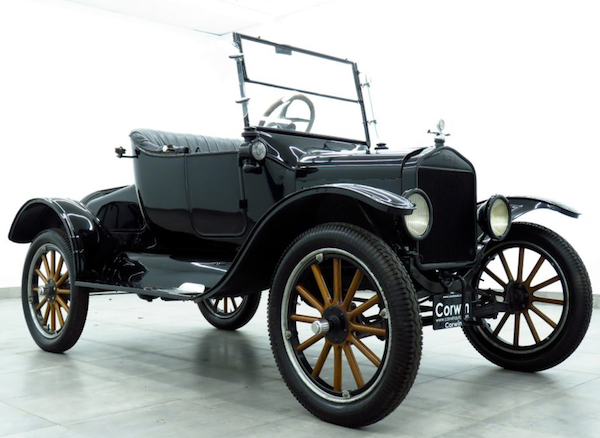
15. Ford began working on the Model T in 1907.
It is still considered the most influential automobile ever made. And an almost immediate success. Many new features that debuted with the Model T continue today, such as the placement of the steering wheel on the left of the front seat, rather than the center, rear-wheel drive, floor pedals, spring suspension, and more. (As an interesting note, Ford did create Models A through S as concepts—most of them never went into production).
16. Henry Ford didn’t invent the assembly line.
He pioneered and perfected the use of assembly lines in large scale manufacturing. To lower production costs, Ford began to develop more efficient processes for his factory. The first Model Ts were assembled slowly by hand, but demand far outstripped production. Ford split the car’s production into 84 steps, and gradually streamlined the manufacturing process. At first, he trained each worker to complete just one single step, rather than teaching everyone all aspects of the production.
17. Before Ford perfected his assembly line, a single car could take weeks to build.
In 1910, a Model T could be built from start to finish in just twelve and a half hours. By 1914, a car could be completed in ninety-three minutes. Moving conveyor belts with by rope and pulley systems meant that workers could remain at their stations while parts came to them. This innovation made huge improvements to efficiency. Ford recognized the development of the motorized conveyer belt as one of his greatest accomplishments.
18. Ford envisioned his product as the car for everyone.
Because of his advances in mass production, one of the many revolutionary aspects of the Model T was its affordability. It was shockingly inexpensive for its time, and for a long while, prices continued to drop, and technological advances constantly improved productivity.
For the first time, cars were accessible to the middle classes or what he called “the great masses.” In 1924, more than half the cars in the U.S. sold were Ford Model Ts. The cars were so ubiquitous that they needed no advertising; until production ceased in the late 1920s. Fifteen million Model Ts were sold during their production. To this day, the Model T is still in the top 10 bestselling vehicles ever made.
19. Ford resisted making what he thought of as “frivolous” updates to his cars.
He believed in producing a simple, reliable product. The Model T was indeed reliable, to the point that there are thousands still on the road today.
In 1927, yielding to the American desire for progress and modern improvements, the last Model T was manufactured. The newest car, the Model A (not to be confused with Ford’s very first 1903 prototype), had many updates, including the first use of safety glass in the windshield. Additional options for paint colors, a fuel gauge, and a rearview mirror appeared as time went on.
20. Henry Ford was a pacifist and an advocate for the working class.
Ford believed in mass production and fair pay. This unique philosophy for the time is now known as “Fordism.” He believed that consumerism was the key to a peaceful, global future. The Ford Motor Company was able to recruit the best engineers and mechanics. He foresaw profit-sharing as the capitalist philosophy of the future. He offered higher wages than any of his competitors, which resulted in a quantifiably higher quality of work and productivity from his employees. He also believed that leisure time made for better workers, and pioneered the five days, forty-hour workweek.
He was strongly anti-war and tried to use his economic influence to sway the U.S. toward pacifism. He believed that international prosperity was the answer to reducing conflicts. Ultimately, he was unsuccessful and saw his company manufacturing machinery and planes for WWII. He briefly attempted a political career, but quickly returned to the automobile industry.
21. Ford had many famous people and inventors as friends.
In addition to his close friendship with Thomas Edison, Ford was acquainted with many other prominent Americans.
He met Harvey Firestone, the founder of the Firestone Tire and Rubber Company in 1897, and Firestone’s tires appeared on some of Ford’s earliest prototypes. Ford, Firestone, and Edison were sometimes dubbed the “The Millionaires Club.” In 1948, Ford’s grandson and Firestone’s granddaughter were married; their son William Clay Ford Jr. became chairman of the Ford Motor Company in 1999.
Ford was also good friends with naturalist and author John Burroughs, who was initially horrified by the idea of thousands and thousands of cars on the road. He wrote about his belief that noise and pollution would destroy America’s quiet and peaceful natural spaces. Ford, however, was an enthusiastic birdwatcher and a fan of Burroughs’ work, and sent him a Model T, eventually winning him over to both new machinery and friendship.
Edison, Firestone, Ford, and Burroughs became known as “The Vagabonds.” They vacationed together, traveling in long caravans of Model Ts with friends, staff, and occasionally wives. This pioneering group popularized the concept of the road trip. They would travel for a week or two at a time, visiting the natural beauty and great landmarks of America. Edison was generally the navigator for the trips, and Ford, of course, maintained the cars. They attracted fans who gathered to watch the famous men drive through their towns.
22. Ford was politically active as a peace advocate.
He ran for U.S. Senate in 1918 at the encouragement of President Woodrow Wilson, losing narrowly. Harvey Firestone supported and managed his campaign. Ford and President Wilson continued to correspond, and Ford was a strong supporter of the President and his campaign to strengthen the League of Nations.
In 1921, President Warren Harding joined “The Vagabonds” on one of their trips. Although well-liked by Ford and his friends, Harding’s accompaniment signaled the end of the Vagabonds. The group’s growing celebrity made quiet retreats impossible as they drew large crowds.
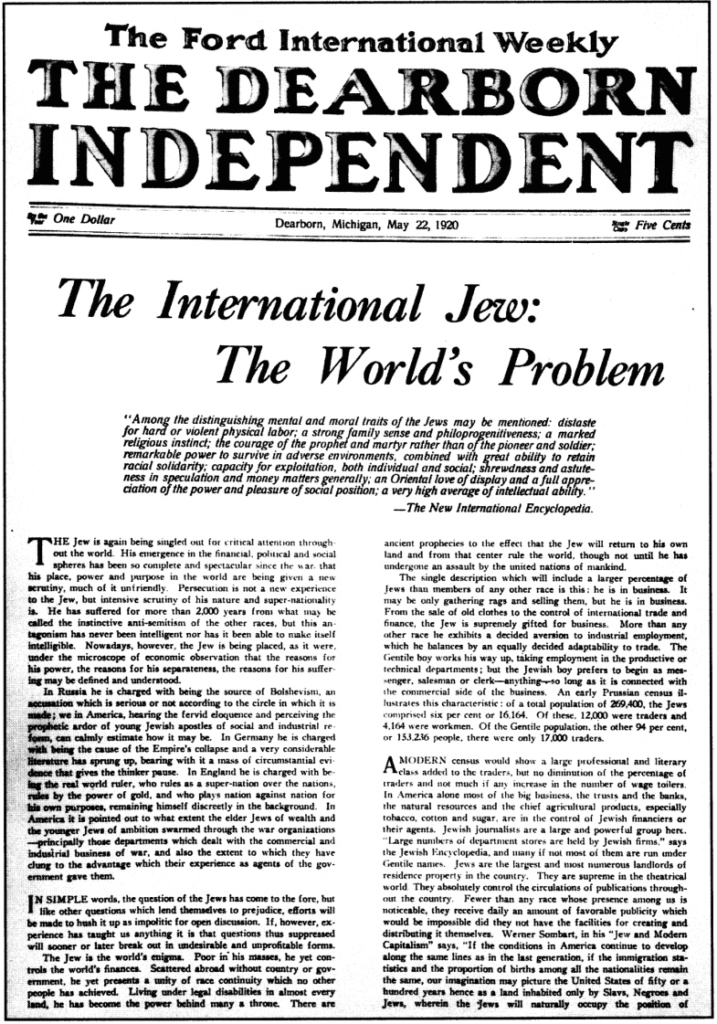
23. Ford held strong anti-Semitic views and was a Nazi supporter.
He sponsored a weekly newspaper, The Dearborn Independent. This paper was later renamed The Ford International Weekly, which ran articles accusing Jews of deliberately starting wars in order to profit from them. Every Ford dealership was supplied with copies of the paper, and more than 700,000 copies were printed.
He also published a series of pamphlets called The International Jew, accusing German-Jewish bankers of instigating World War I, and claiming that Jews brought the discrimination and violence they suffered upon themselves. He was praised by Adolf Hitler, who called him an “inspiration” and a “great man.”
Ford paid for the printing of The Protocols of the Elders of Zion, a fraudulent document claiming to be the Jewish plan for world dominance and attempts to control the global economy. The forgery was entirely discredited, but conspiracy theorists continue to argue its validity today. After a lawsuit for libel and economic and public relations pressure, Ford apologized for his paper’s public accusations in 1927 but claimed that, while the articles were published under his name, he neither wrote nor approved them.
This period in Henry Ford’s life marks a great stain on his reputation and legacy. It is one that is still talked about and debated to this day.
24. Ford was succeeded by his son Ensel as President of the company in 1919.
Henry Ford remained a strongly influential figure during his son’s tenure as President. Henry was resistant to change in either the cars themselves or the company’s policies. Father and son butted heads frequently. Ensel passed away tragically at only the age of forty-nine. His father regained control of the company after his son’s death. Ford was stubbornly insistent that his cars did not need improvements, and the Ford Company lost market share to other manufacturers offering new styles and conveniences.
Henry Ford suffered from mental deterioration after several strokes. His unpredictable behavior began to damage the Ford Motor Company’s reputation and operations. His actions were another low point that brought the company close to bankruptcy.
Ford finally retired in 1945, reportedly because his wife and daughter-in-law threatened to sell their shares of the company if he did not.
Ford passed away in 1947. The circumstances of his death are ironic. Poor weather conditions that caused flooding meant that the electrical power to his home had been switched off. The champion of modern industry and technological advancements died surrounded by candles and lanterns.
Ford was succeeded by four grandchildren. The oldest, Henry Ford II, was President and later CEO of the Ford Motor Company from 1945 to 1980. Henry Ford II took the Ford Motor Company public in 1956.
25. In 1902 Ford’s first company was renamed Cadillac.
The Henry Ford Company is still thriving under its new name. Now one of the most popular luxury carmakers in the U.S., the brand is part of General Motors, the largest American car manufacturer and one of the biggest companies in the world.
Additional Facts
Ford was the author of several books in partnership with author and journalist Samuel Crowther:
My Life and Work, 1922.
Today and Tomorrow, 1926.
Moving Forward, 1930.
Edison As I Know Him, 1930.
The Ford Foundation was created in 1936 with the mission of improving human welfare. The foundation was once a shareholder in the Ford Motor Company, but the two are no longer connected. Henry Ford’s descendants continue their involvement. The foundation is one of the largest private endowments in the world and has made grants to support progress in education, public media, microfinancing, medical advancements, and free speech. It has made the list of Forbes “World’s Most Innovative Companies.”
Conclusion.
Henry Ford is celebrated as an engineer, mechanic, inventor, and businessman.
The Ford Motor Company today is the second-largest auto manufacture in the U.S. and the fifth-largest in the world. Revenue was reported in 2017 as $156.7 billion. It is currently #12 on the Fortune 500 List, a ranking of the largest U.S. companies, with approximately 200,000 employees in 90 locations in North and South America, Africa, Asia, and Europe. The Ford Motor Company also owns the luxury carmaker Lincoln, as well as a non-controlling stake in Aston Martin. Edsel Bryant Ford II, Henry Ford’s great-grandson, sits on the board, and another great-grandson, William Clay Ford Jr., is the Executive Chairman.
He is remembered as a complicated man, at times a champion of peace and advocate for workers’ rights; at others, a man opposed to change and modernity, with hateful, anti-Semitic beliefs, who helped spread toxic propaganda. There is no doubt that he is one of the architects of modern technology, and his accomplishments still have an impact on most day-to-day lives in the modern world.
He experienced a great many setbacks from both bad luck and poor decision-making. He is often quoted as saying, “Failure is the opportunity to begin again.” For every Model T, there must first be a Quadricycle; Ford’s success was built on his creativity and genius, but also his willingness to persevere and fight for his vision.

Are you ready to become an inventor?
Getting your idea out of your head and into your hands is only the first in a long set of steps towards becoming a successful inventor.

First Steps To A Successful Invention
At Invention Therapy, we believe that the power of the internet makes it easier than you think to turn your invention idea into a reality. In most cases, you can build a prototype and start manufacturing a product on your own. Changing your way of thinking can be difficult. Being an inventor requires you to balance your passion with the reality of having to sell your products for a profit. After all, if we can't make a profit, we won't be able to keep the lights on and continue to invent more amazing things!Please subscribe to our Youtube Channel!


